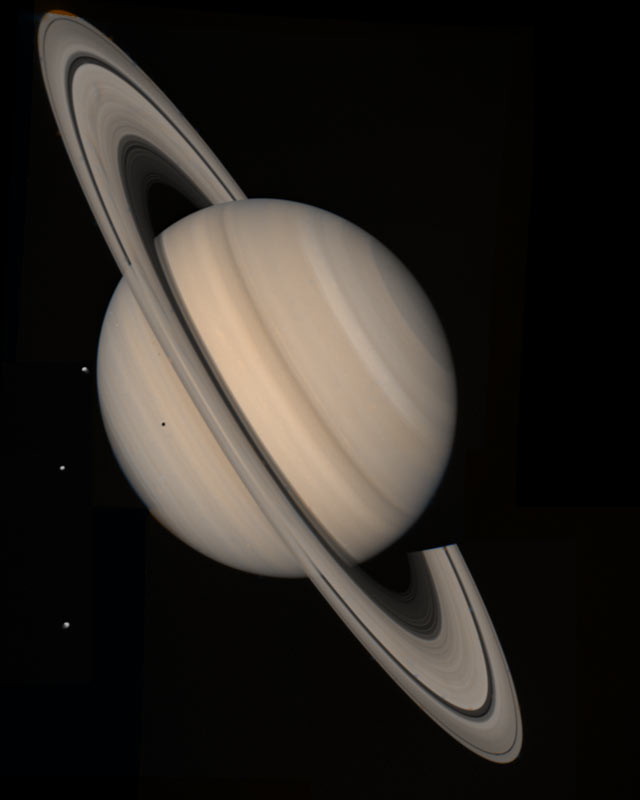How Big is Saturn?
Saturn, the sixth planet in the solar system, is the second largest. Only Jupiter is larger, weighing in just shy of three times its mass. Saturn's beautiful rings, visible even with an inexpensive telescope, make it a favorite in the night sky.

Saturn's diameter, radius and circumference
The mean radius of the body of Saturn is 36,184 miles (58,232 kilometers). However, the giant planet spins swiftly, completing a "day" in just over ten and a half hours. The rapid rotation serves to flatten the planet slightly at the poles while bulging at the equator. All of the gas giants in the solar system bear the same shape of an oblate spheroid, but on Saturn the condition is the most pronounced, with the polar radius (33,780 miles, or 54,364 km) only about 90 percent that of the equatorial radius (37,449 miles, or 60,268 km).
A walk around the equator of Saturn would carry you 227,349 miles (365,882 kilometers). That's over nine times the distance a similar journey around Earth would take you. Of course, such a walk would be a challenge, since Saturn's composition is almost completely hydrogen and helium, and lacks a solid surface.
Density, mass and volume
The mean density of Saturn is 0.687 grams per cubic centimeter, making it the only planet in the solar system less dense than water. The mass of the ringed planet is 5.68 x 1026 kilograms, 95 times the mass of Earth. Although the planet is only a third the mass of Jupiter, it is about 80 percent as large, contributing to its low density.
Ring around the planet
Although several other planets boast rings, Saturn's are the largest and most visually stunning. Balanced around the equator, the rings start about 4,120 miles (6,630 km) out from the planet and extend to a distance of 262,670 miles (422,730 km), or eight times the radius of the planet. The five rings are composed primarily of chunks of water-ice, mixed with pieces of rocks. They average a thickness of 66 feet (20 meters). [Amazing Video of Saturn Stitched Together from Old NASA Photos]
— Nola Taylor Redd, SPACE.com Contributor
Related:
Join our Space Forums to keep talking space on the latest missions, night sky and more! And if you have a news tip, correction or comment, let us know at: community@space.com.
Get the Space.com Newsletter
Breaking space news, the latest updates on rocket launches, skywatching events and more!

Nola Taylor Tillman is a contributing writer for Space.com. She loves all things space and astronomy-related, and enjoys the opportunity to learn more. She has a Bachelor’s degree in English and Astrophysics from Agnes Scott college and served as an intern at Sky & Telescope magazine. In her free time, she homeschools her four children. Follow her on Twitter at @NolaTRedd










